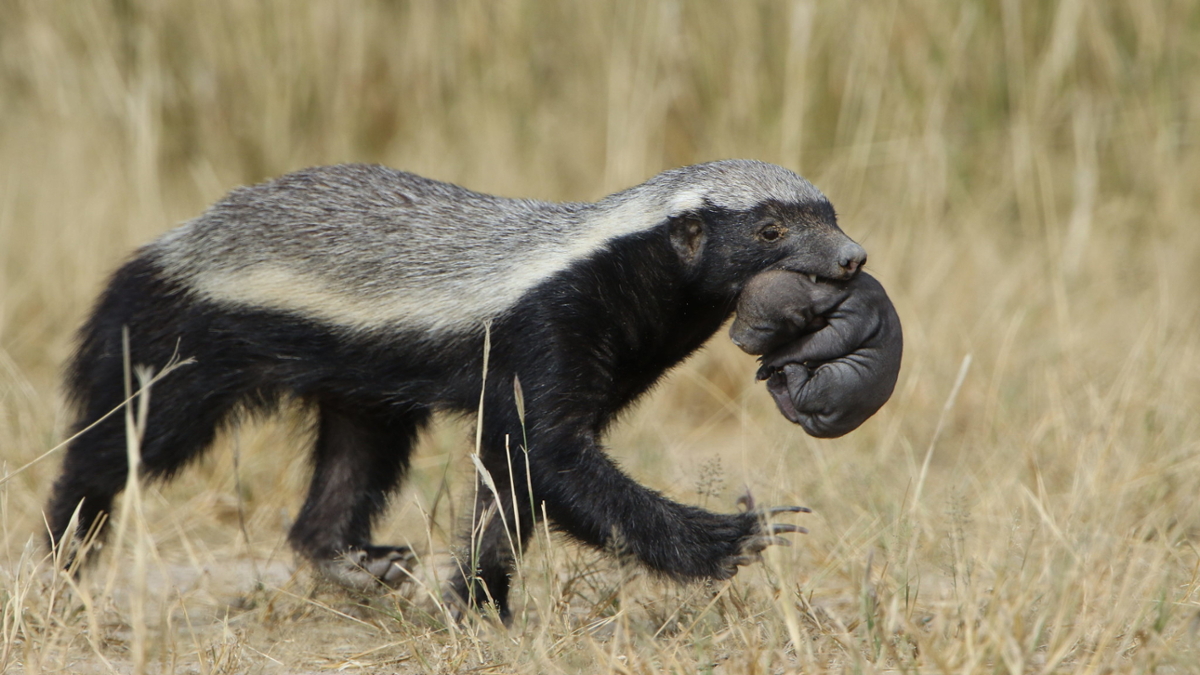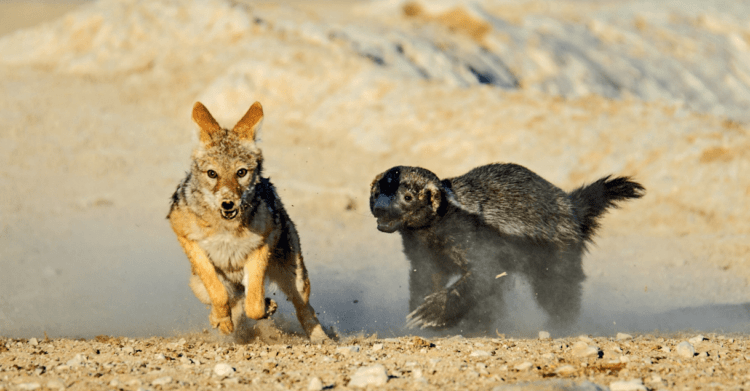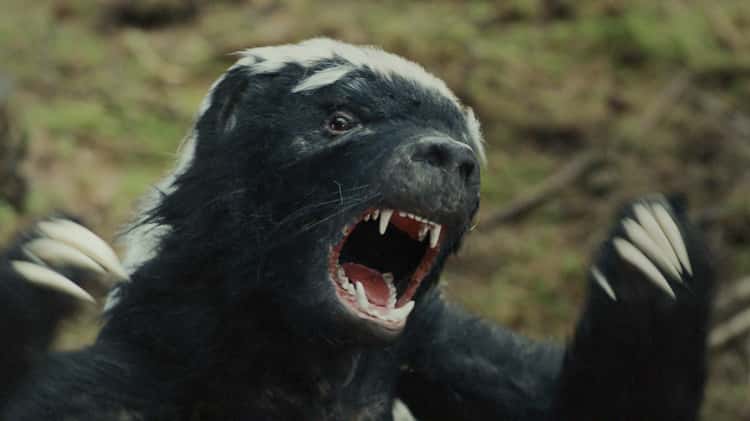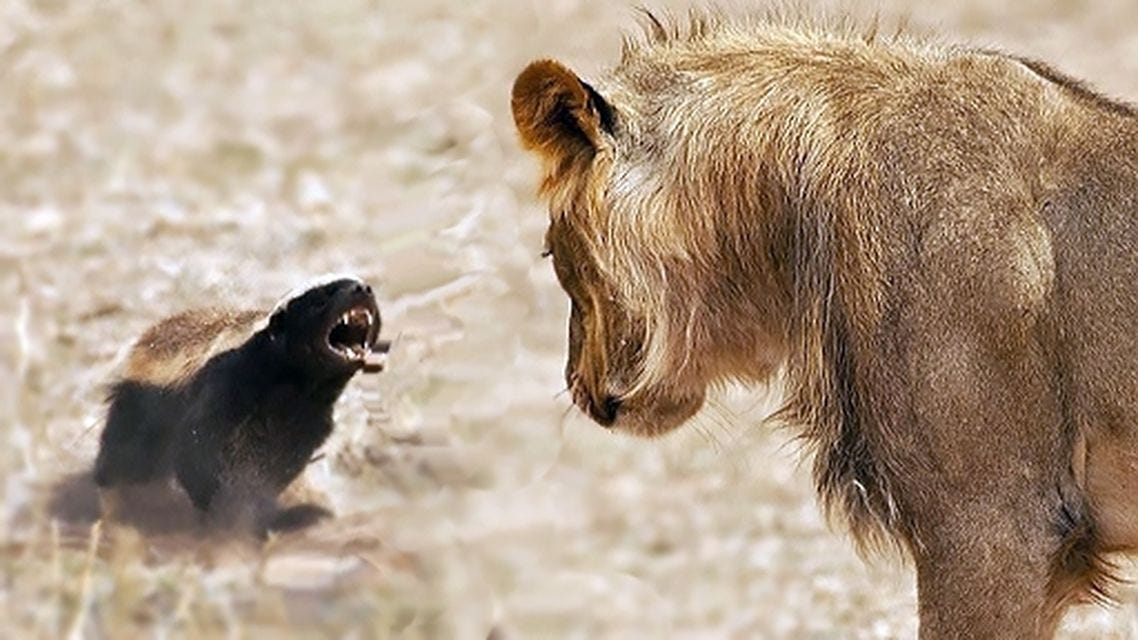Fearless and Fierce: The Unstoppable Nature of the Honey Badger
Introduction:
The honey badger, also known as Mellivora capensis, is a remarkable creature renowned for its fearless demeanor and formidable reputation in the animal kingdom. Despite its relatively small size, this tenacious mammal possesses an indomitable spirit and a remarkable set of adaptations that have earned it the title of "the world's most fearless animal." In this article, we explore the captivating characteristics, behaviors, ecological significance, and cultural symbolism of the honey badger, shedding light on why it has captured the fascination of people worldwide.
Anatomy and Physical Adaptations:
The honey badger is a compact carnivore characterized by its stocky build, powerful jaws, and distinctive black and white markings. Its thick, loose skin provides protection against predators and allows for freedom of movement, enabling it to twist and turn even when gripped tightly. Sharp claws and sturdy limbs facilitate digging, while a keen sense of smell aids in locating prey and scavenging opportunities in its arid habitats.
Fearless Behavior and Predatory Skills:
Renowned for its audacious nature, the honey badger fearlessly confronts adversaries many times its size, earning it a reputation as a formidable predator. Armed with sharp teeth and claws, it readily takes on venomous snakes, including cobras and puff adders, displaying remarkable immunity to their deadly toxins. The honey badger's tenacity and resourcefulness enable it to raid beehives for honey and larvae, showcasing its adaptability and intelligence in acquiring sustenance.
Ecological Role and Habitat:
Honey badgers inhabit a wide range of habitats across sub-Saharan Africa, including savannas, woodlands, and semi-desert regions. As opportunistic omnivores, they play a crucial role in ecosystem dynamics by regulating insect populations, controlling rodent numbers, and scavenging carrion. Their burrowing activities aerate the soil and create shelter for other wildlife species, underscoring their significance as ecosystem engineers.
Cultural Significance and Folklore:
The honey badger holds a prominent place in the folklore and cultural beliefs of indigenous African societies, symbolizing courage, resilience, and cunning. Its legendary exploits have been immortalized in tales and proverbs, depicting it as a fearless warrior and a trickster figure revered for its prowess and survival instincts. In modern times, the honey badger's iconic status has been further amplified through viral videos and internet memes, cementing its reputation as a symbol of unyielding determination.
Conservation Status and Threats:
Despite its formidable reputation, the honey badger faces numerous threats to its survival, including habitat loss, poaching, and human-wildlife conflict. Encounters with farmers protecting livestock and indiscriminate trapping pose significant risks to honey badger populations, leading to localized declines in some regions. Conservation efforts focused on habitat preservation, community engagement, and education are essential for safeguarding this iconic species and preserving its ecological role.
Research and Scientific Discoveries:
Scientific research on honey badgers has provided valuable insights into their behavior, physiology, and ecological interactions. Studies have revealed the honey badger's remarkable resistance to snake venom, shedding light on potential applications in antivenom research and human medicine. Advances in tracking technology, such as GPS collars and camera traps, have enabled researchers to study honey badger movements and behavior in greater detail, contributing to conservation efforts and wildlife management strategies.
Captivating Encounters and Human Fascination:
The honey badger's fearless reputation and captivating behavior have captivated wildlife enthusiasts, researchers, and filmmakers alike. Documentaries showcasing their daring escapades and confrontations with predators have garnered widespread acclaim, fostering admiration and respect for these resilient creatures. Close encounters with honey badgers in their natural habitats offer profound insights into their complex social dynamics and survival strategies, deepening our appreciation for the wonders of the natural world.
In the vast tapestry of the animal kingdom, the honey badger stands out as a symbol of courage, resilience, and indomitable spirit. From its fearless confrontations with deadly predators to its ingenious foraging tactics, the honey badger embodies the essence of survival in the wild. As we continue to unravel the mysteries of this enigmatic creature and work to conserve its natural habitats, let us celebrate the enduring legacy of the honey badger and draw inspiration from its unwavering determination to thrive in a challenging world.
Conservation Efforts and Challenges:
Preserving the habitat and ensuring the survival of honey badger populations require concerted conservation efforts and effective management strategies. Conservation organizations collaborate with local communities, governments, and stakeholders to implement habitat restoration initiatives, establish protected areas, and mitigate human-wildlife conflicts. However, challenges such as poaching, habitat fragmentation, and insufficient resources pose significant obstacles to conservation efforts. Addressing these challenges requires sustained commitment, community engagement, and innovative approaches to safeguarding honey badger populations and their ecosystems.
Role in Ecosystem Dynamics:
Honey badgers play a vital role in maintaining ecological balance and biodiversity within their habitats. As apex predators and scavengers, they regulate prey populations, control insect pests, and facilitate nutrient cycling through their feeding behaviors and burrowing activities. By influencing the abundance and distribution of species within ecosystems, honey badgers contribute to the overall health and resilience of terrestrial ecosystems, highlighting their ecological importance beyond their charismatic appeal.
Adaptations for Survival:
The honey badger's remarkable adaptations for survival have evolved over millennia, enabling it to thrive in diverse and challenging environments. Its thick, loose skin provides protection against bites and stings, while its strong claws and muscular build facilitate digging and hunting. Behavioral adaptations, such as scent marking and vocalizations, serve social and communicative functions within honey badger communities, enhancing their ability to coordinate activities and defend territories.
Myths and Misconceptions:
Despite its iconic status, the honey badger is often misunderstood and misrepresented in popular culture and media. Mythical accounts of its invincibility and exaggerated portrayals of its behavior perpetuate misconceptions about its true nature and ecological role. While the honey badger is undeniably resilient and resourceful, it is not immune to threats and vulnerabilities, underscoring the importance of accurate information and conservation awareness to ensure its long-term survival.
Educational Outreach and Awareness:
Educating the public about the ecological significance of honey badgers and the importance of conserving their habitats is essential for fostering appreciation and support for conservation initiatives. Outreach programs, nature documentaries, and eco-tourism experiences provide opportunities for people to connect with honey badgers in their natural environments and learn about their fascinating adaptations and behaviors. By raising awareness and promoting conservation stewardship, we can inspire future generations to value and protect these remarkable creatures and the ecosystems they inhabit.
Conclusion:
The honey badger's indomitable spirit, fearless nature, and remarkable adaptations exemplify the resilience and ingenuity of life in the natural world. As we strive to understand and conserve this iconic species, let us embrace the lessons it teaches us about perseverance, adaptability, and coexistence with the myriad forms of life that share our planet. By working together to protect honey badgers and their habitats, we can ensure that future generations inherit a world rich in biodiversity, wonder, and awe-inspiring creatures like the honey badger.


































